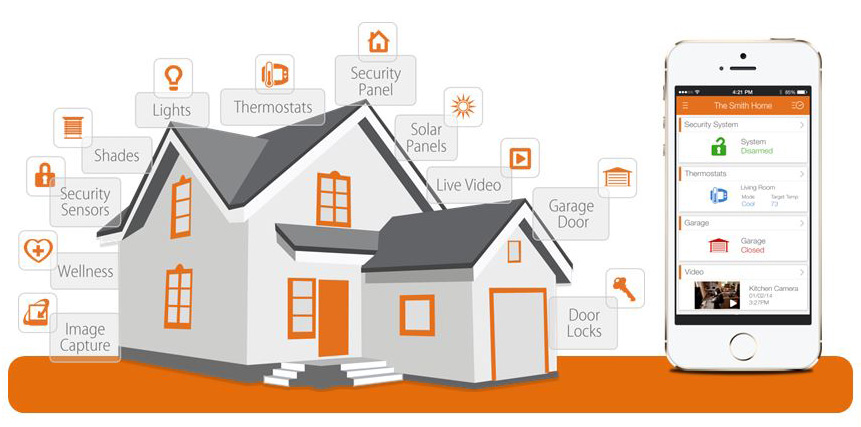CXBOS Insights
Your daily dose of news, insights, and information.
The Secret Life of Smart Homes Revealed
Uncover the hidden world of smart homes! Discover secrets, hacks, and surprises that will transform your living space. Dive in now!
Uncovering the Technology: How Smart Homes Work Behind the Scenes
The concept of a smart home encompasses a network of devices that communicate with one another, providing owners with unparalleled control and convenience. At the heart of this technology lies the Internet of Things (IoT), a system allowing everyday objects to connect to the internet and send or receive data. These devices include smart lights, thermostats, security cameras, and more, all of which can be managed through a central hub or a smartphone app. This interconnectedness is facilitated by wireless protocols such as Wi-Fi, Zigbee, and Z-Wave, ensuring that users can monitor and automate their home environment seamlessly.
Behind the scenes, the functioning of a smart home relies on a blend of hardware and software components. Each device is equipped with sensors and processors to gather information and perform actions. For instance, a smart thermostat can learn your heating preferences over time, adjusting the temperature automatically based on your habits. Moreover, security is a paramount concern; many smart home systems incorporate encryption protocols to protect data from unauthorized access. As technology continues to evolve, the potential for creating even more efficient and responsive smart homes is becoming a reality, paving the way for a more connected living experience.

Top 10 Surprising Features of Smart Homes You Didn't Know Existed
Smart homes are revolutionizing the way we interact with our living spaces, often incorporating features that go beyond basic automation. For instance, did you know that many smart home systems can monitor your energy consumption in real-time? This not only empowers you to make more efficient energy choices but can also lead to significant savings on your utility bills. Additionally, smart homes often come equipped with advanced security features like facial recognition cameras and smart locks that you can control remotely, ensuring peace of mind whether you’re at home or away.
Another surprising feature of smart homes is the integration of health monitoring systems. Innovative technologies can track air quality, humidity, and even the levels of carbon dioxide in your home, helping to create a healthier environment for you and your family. Moreover, some smart home devices can synchronize with wearable fitness trackers to monitor your physical activity and well-being, providing a comprehensive overview of your personal health. With these advancements, it's clear that the future of smart living extends well beyond convenience to encompass wellness and sustainability.
Are Smart Homes Really Safe? Debunking Myths and Revealing Truths
As technology continues to advance, the concept of smart homes has gained immense popularity, but concerns about their safety persist. Many individuals worry that integrating devices like smart thermostats, security cameras, and voice assistants into their homes exposes them to cyber threats. However, these fears often stem from misconceptions. For instance, while it is true that smart homes can be vulnerable to hacking, proper security measures—such as using strong, unique passwords and keeping devices updated—can significantly mitigate risks. In fact, many smart home systems come equipped with advanced encryption protocols designed to protect user data.
Another common myth is that smart home devices are inherently less secure than traditional systems. In reality, the level of safety largely depends on how the technology is implemented and maintained. Features like remote monitoring and automated alerts can enhance security in ways that traditional systems cannot. For example, if a security camera detects suspicious activity, it can send real-time notifications to homeowners or authorities. Thus, it is crucial to focus on understanding how these systems work, rather than succumbing to fear of the unknown. By educating themselves on best practices and functionalities, homeowners can enjoy the conveniences of a smart home while ensuring its safety.